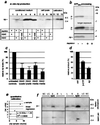Simvastatin strongly reduces levels of Alzheimer's disease beta -amyloid peptides Abeta 42 and Abeta 40 in vitro and in vivo
- PMID: 11296263
- PMCID: PMC33303
- DOI: 10.1073/pnas.081620098
Simvastatin strongly reduces levels of Alzheimer's disease beta -amyloid peptides Abeta 42 and Abeta 40 in vitro and in vivo
Abstract
Recent epidemiological studies show a strong reduction in the incidence of Alzheimer's disease in patients treated with cholesterol-lowering statins. Moreover, elevated Abeta42 levels and the varepsilon4 allele of the lipid-carrier apolipoprotein E are regarded as risk factors for sporadic and familial Alzheimer's disease. Here we demonstrate that the widely used cholesterol-lowering drugs simvastatin and lovastatin reduce intracellular and extracellular levels of Abeta42 and Abeta40 peptides in primary cultures of hippocampal neurons and mixed cortical neurons. Likewise, guinea pigs treated with high doses of simvastatin showed a strong and reversible reduction of cerebral Abeta42 and Abeta40 levels in the cerebrospinal fluid and brain homogenate. These results suggest that lipids are playing an important role in the development of Alzheimer's disease. Lowered levels of Abeta42 may provide the mechanism for the observed reduced incidence of dementia in statin-treated patients and may open up avenues for therapeutic interventions.
Figures


Comment in
-
A fluid connection: cholesterol and Abeta.Proc Natl Acad Sci U S A. 2001 May 8;98(10):5371-3. doi: 10.1073/pnas.101123198. Proc Natl Acad Sci U S A. 2001. PMID: 11344276 Free PMC article. No abstract available.
References
-
- Wolozin B, Kellman W, Ruosseau P, Celesia G G, Siegel G. Arch Neurol. 2000;57:1439–1443. - PubMed
-
- Jick H, Zornberg G L, Jick S S, Seshadri S, Drachman D A. Lancet. 2000;356:1627–1631. - PubMed
-
- Pedersen T R, Berg K, Cook T J, Faergeman O, Haghfelt T, Kjekshus J, Miettinen T, Musliner T A, Olsson A G, Pyorala K, et al. Arch Intern Med. 1996;156:2085–2092. - PubMed
-
- Scandinavian Simvastatin Survival Study Group. Lancet. 1994;344:1383–1389. - PubMed
-
- Corder E H, Saunders A M, Strittmatter W J, Schmechel D E, Gaskell P C, Small G W, Roses A D, Haines J L, Pericak-Vance M A. Science. 1993;261:921–923. - PubMed
Publication types
MeSH terms
Substances
LinkOut - more resources
Full Text Sources
Other Literature Sources
Medical

